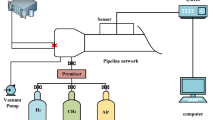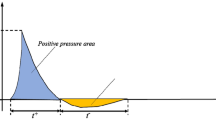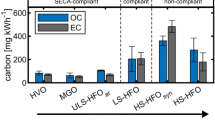Abstract
WHEN inflammable gases are exploded with air or oxygen, the products are frequently observed to luminesce after the passage of the main flame front ; the effect is especially marked with explosions in closed vessels, the burnt gases glowing brightly as the pressure waves caused by the explosion travel back through them. In one series of experiments with carbon monoxide, David found that this 'afterburning' could be seen for so long as 14 sec. Observations of this type, and measurements of the temperature distribution following explosions in closed vessels, led Ellis, Wheeler and Morgan to support this afterburning concept. David and colleagues took a series of time-pressure records for explosions of mixtures of dry carbon monoxide and air with small amounts of hydrogen added, using vessels of various dimensions ; they found that the ratio of final to initial pressure was greater for explosions in large vessels than in small vessels, from which they concluded that combustion was incomplete in the smaller vessels, and therefore probably still incomplete even in the larger vessels.
This is a preview of subscription content, access via your institution
Access options
Subscribe to this journal
Receive 51 print issues and online access
$199.00 per year
only $3.90 per issue
Buy this article
- Purchase on SpringerLink
- Instant access to full article PDF
Prices may be subject to local taxes which are calculated during checkout
Similar content being viewed by others
References
J. Chem. Phys., 2, 659 (1934).
J. Chem. Soc., 641 (1931).
NATURE, 150, 320 (1942).
Gaydon, Proc. Roy. Soc., A, 176, 505 (1940); 178, 61 (1941); "Spectroscopy and Combustion Theory" (London: Chapman and Hall, 1942).
NATURE, 134, 848 (1934).
"Spectroscopy and Combustion Theory", p. 22.
NATURE, 150, 291 (1942).
Rassweiler and Withrow, Ind. Eng. Chem., 24, 528 (1932).
Frost and Oldenberg, J. Chem. Phys., 4, 781 (1936).
Author information
Authors and Affiliations
Rights and permissions
About this article
Cite this article
GAYDON, A. THE CONDITION OF FRESHLY BURNT GASES. Nature 150, 481–483 (1942). https://doi.org/10.1038/150481a0
Issue date:
DOI: https://doi.org/10.1038/150481a0
This article is cited by
-
Condition of Freshly Burnt Gases
Nature (1942)



